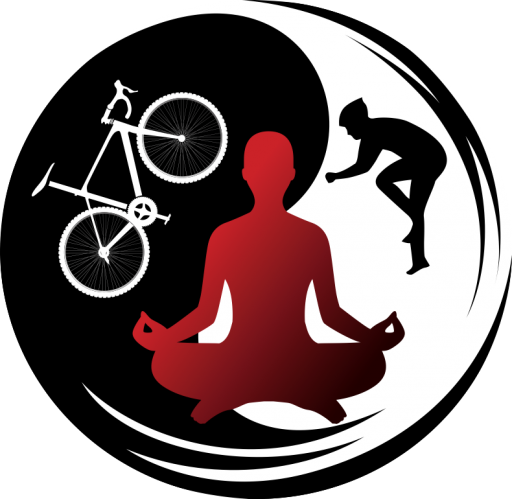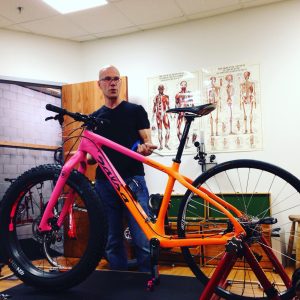State of Bike Fitting – By Colby Pearce and Steve Hogg
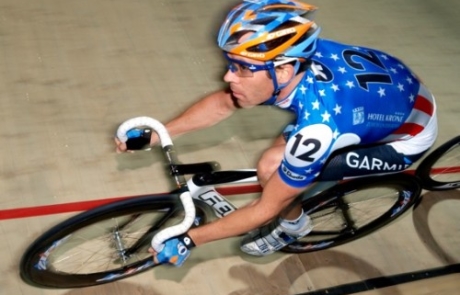
At the most basic level of technology, a competent bike fitter should be able to perform a high quality bike fit using the following tools:
Indoor trainer (more about trainers below), screw drivers, hex keys, torx keys, pen and paper. That’s it. Not much, is it?
Note I used the word ‘competent’ above. A bike fitter derives their competence from the most important tooling of all; a bike fitting brain in good working order that is connected to well trained eyes and ears and experienced hands.
Many bike fitters feel the need to invest considerable sums in motion capture, video capture, high tech adjustable fit bikes, pressure sensors and much, much more. There are a number of reasons for this. As an industry, bike fitting is speedily expanding, with most of this expansion taking place under the well financed, well marketed, corporate umbrellas of bicycle and cycling equipment manufacturers. This rapidly growing need for ‘trained’ bike fitters has seen the equally rapid growth of 3-day bike fitting courses that turn out instant bike fitters. The clear result being that many of the 3-Day Wonder’s subsequent work bears as much relation to a quality bike fit as instant coffee does to coffee produced by a knowledgeable barista who cares about the task. Vaguely similar, but not the real-deal.
There has been a strong push to negate or minimise the knowledge gap of the ‘instant’ fitters (not much can be learned in a 3-day course), so the corporates and fellow travellers (those who have seen a bandwagon and hitched a ride) have invested heavily in technology, with the aim of reducing the need for a bike fitting brain in good working order connected to well trained eyes, ears and experienced hands. The underlying idea is that the techno equipment delivers information to the fitter and at some level reduces the need for the bike fitter to develop stand alone skills. Instead they are trained to become screen watchers, not client observers. The techno equipment has become a profitable industry of itself, with the marketing message being that no self respecting person can possibly call themselves a bike fitter unless they have tens of thousands of dollars worth of techno equipment. This marketing is so effective that much of the cycling public have become conditioned to thinking of this as the norm.
So the bike fitter’s brain is replaced by a data flow. Well trained eyes and ears are replaced by motion capture or video capture packages (cameras connected to software) and experienced hands are replaced by a generic step-by-step list of processes to perform. To some extent this has been successful in the sense that it has gained a level of consumer acceptance because of clever marketing, until that consumer becomes an unhappy, or only partially happy client, post fit session. Over the last three years, 80 percent of my first-time fit clients have had between one and four bike fittings elsewhere before walking through our door… And they’re still not happy, hence eventually finding their way here. A lot of them look reasonable on a bike as the result of these multiple fits, but time and again I see the same shortcomings:
- Seat height too high.
- Leg length discrepancies not found or not compensated for, or even worse, found and ignored (“….no need to worry, extra ankle articulation on that side will solve it”which would be funny, except that is no joke.)
- Foot correction either ignored or just plain badly attempted.
- Cleat position largely ignored.
- Functional issues of the rider overlooked or ignored.
This is what often happens when a generic, technology driven process is applied to individual problems. That this happens to otherwise intelligent bike fitters is because they’ve been indoctrinated in to becoming brand name process workers who spend far more time looking at a data flow than they do looking at their client.

This indoctrination happens because when someone who knows little or nothing about bike fitting after completing a 3-day course with no entrance requirement and no exam, and is offered a ‘solution’ in the form of technology, they cling to that ‘solution’ as it is all that they know. The subsequent over reliance on technology hinders their skills development of the bike fitter. One has to look at a large number of people under controlled conditions before one can instantly recognise the difference between quality movement patterns and aberrant ones, some of which are quite subtle or only present under high load.
I have the utmost respect for several bike fitters I know who have started their fitting careers in this techno heavy / knowledge poor way, only to realise that their client satisfaction rate wasn’t as high as they would like. They found that the solution wasn’t more technology, but less, coupled with the efforts they’ve made to develop skills in observation and interpretation of human movement. Sooner or later they have arrived at the point of having a bike fitting brain in good working order connected to experienced eyes, ears and well trained hands. It takes a level of courage, confidence and self belief to walk away from $$$$ of equipment and let it gather dust while developing the necessary personal skills to become a high quality bike fitter.
I am not anti technology. I’ve heard several bike fitters with techno equipment say that they find it handy as a client education tool. I can understand that and think that is an appropriate use for their digital data flow. I’m against the inappropriate use of technology, and in bike fitting, this is a widespread and growing problem.
Bike fitting is all about making multiple judgment calls during a fitting session. When the fitter needs the technology to direct him or her towards making multiple, digital, data flow directed judgments about their client, the outcome will likely be below par. When the fitter is the master and the technology is only an aid to brain, eyes, ears and hands, then that’s fine. The best possible tool yet devised for making judgment calls about a human body on a bicycle is another human body in the form of a bike fitting brain in good working order connected to well trained eyes and ears and experienced hands.

If you’re shopping around for a fit, I don’t really care about how much equipment your potential fitter of choice has. They may use it or they may not. The only thing that matters is the result. The fitter may rely heavily on technology or they may not. What characterises real deal bike fitting is an obsession with client satisfaction. This takes the form of a money back if not happy guarantee. If a fitter is prepared to let the client in large part dictate the fitters’ financial success or otherwise, then you, the client, will likely be happier with that person making judgment calls than you will be with the fitter who charges on an “…………all care, but no responsibility……….” basis. It often seems that the more technology laden the approach, the less responsibility taken for the result.
I’ll tell you how seriously I take this issue. Anyone who trains here has a contractual stipulation that they work on a money back if not happy basis. That those who have trained here accept that stipulation demonstrates to me that they are as deadly serious as I am about client satisfaction. This is not all pain and no gain for the bike fitter. An unhappy customer is a wonderful opportunity for a fitter to learn lessons that they will likely not have to be taught twice.
Lastly, a word about indoor trainers and the adjustable fitting bikes used by many bike fitters. I’ll preface this by saying that I’m far from the first person to say or think about what follows. A bike fitter should be looking at arriving at a bike position for their client that has real world application. A bicycle in the real world is not inherently stable. The rider needs to make constant unconscious adjustments to keep the bicycle upright and pointing in the desired direction. So it follows that the indoor experience of rider on bike for fitting purposes should mimic real world feel as closely as possible by being unstable. This cannot be done on a stable fitting platform such as shown below:
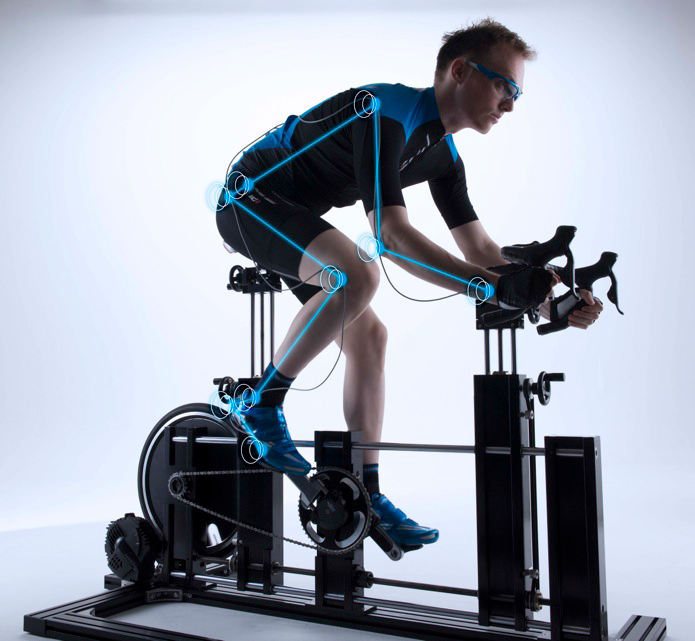
This is why, in my case, I use a 15-years-old Sidea SB4 trainer for fitting purposes. When the rear wheel of a client’s bike is locked up in my old machine, it can lean 15 degrees to either side of vertical unless the rider makes an unconscious effort to hold it upright.
Twenty-something years ago, the basic realisation that fitting should be conducted on an unstable platform meant that I was never able to use lasers, motion capture or video capture systems because the clients bike and body were always moving around. I trialed each of these technologies in tandem with stable trainers, but each time I found that the results were not as satisfactory and went back to using my unstable trainer and low tech approach. Out of necessity, I had to develop a bike fitting brain in good working order connected to well trained eyes and ears and experienced hands. No other single decision I’ve made about how I go about the task of bike fitting has had such far reaching and positive effects on my development as a bike fitter.
Equipment like that pictured above, or a stable indoor trainer that doesn’t allow the client’s bike to move, is not going to yield a bike position that will be optimal in real world conditions. There are always small improvements to be made that can only be deduced by trial and error outdoor testing, or by further refinement on an unstable fitting platform. Yet the bike fitting equipment industry markets ‘fitting bikes’ similar to the one pictured above, costing up to $36,000 USd as a ‘must have’ item for any bike fitter.
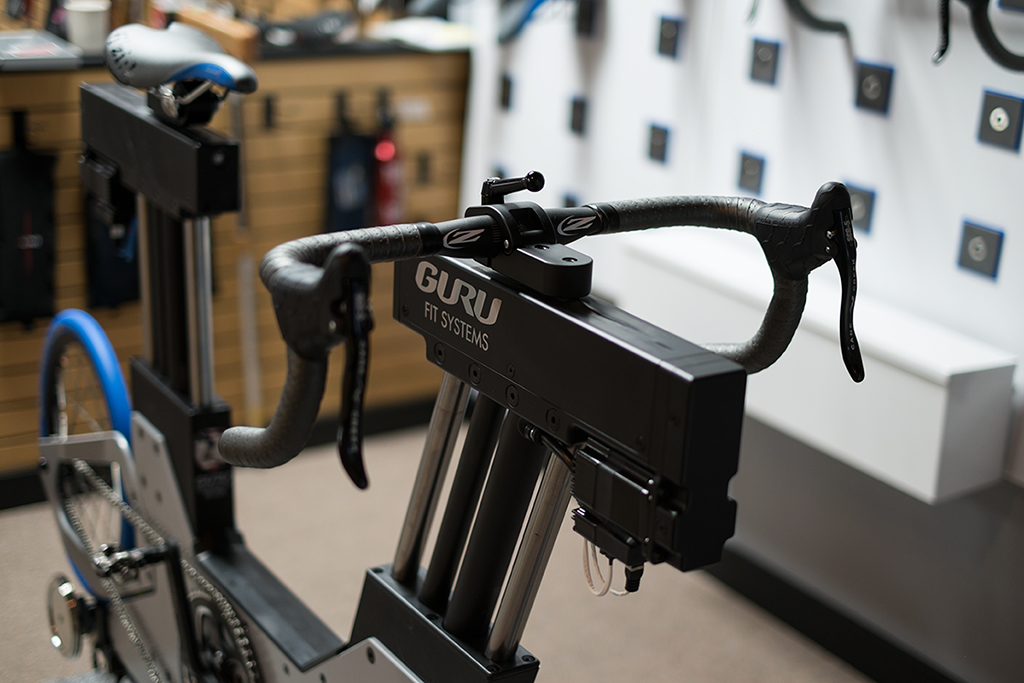
An adjustable bike is handy for a bike fitter, but in my case the only purpose I put it to is to determine a position that is close enough which then enables me to deduce frame dimensions from that position for clients who don’t currently own a bike. Then those dimensions are used as a basis for comparison to production frame geometries. Once the rider has purchased whatever recommendation I make, then the fitting is finalised on their bike while mounted on my unstable old SB4.
So the message is this:
For bike fitters; fit clients on their bike, not a ‘fitting bike’ and you will find that your client satisfaction rates will improve.
For riders; if a bike fitter doesn’t want to fit you on your bike, find one who will as the outcome will likely be better.
Click to learn more about Colby?
Click for more great articles.
